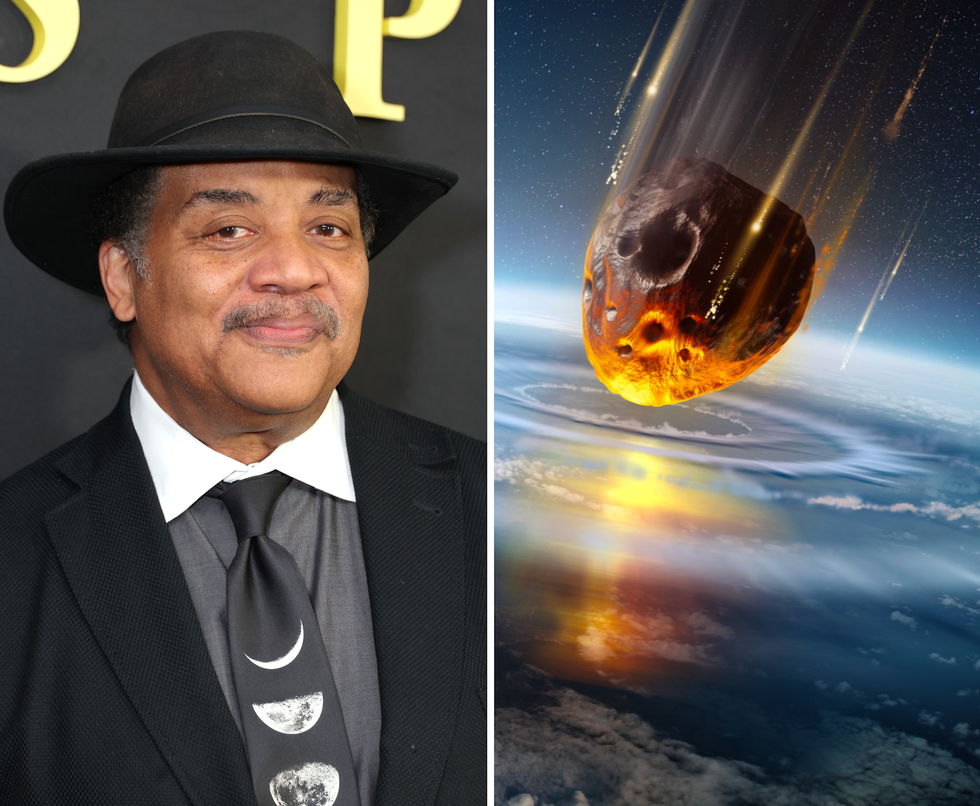Science & Tech
Sinead Butler
Sep 27, 2024
Inside Madison Square Garden's bizarre feud with Dr. Neil deGrasse Tyson
New York Post - Page Six / VideoElephant
Astrophysicist Neil deGrasse Tyson previously shared an alarming prediction about when an asteroid may hit Earth in the future.
Speaking to Conan O'Brien in 2007, Tyson mentioned the asteroid Apophis which was discovered in 2004 and explained what would happen in a hypothetical scenario where it did hit Earth.
"If it strikes and hits the centre of where we think it will be, it will plunge into the Pacific Ocean, cavitate the ocean with a three-mile wide hole, three miles deep," Tyson detailed.
"At that point, a pulse of water rushes towards the coastline of North America, then the water will slosh back in.
He continued: "You get these pulses, every pulse that hits the coast, it reaches those million dollar homes in Malibu, brings them out to the ocean, rushes them back, and they don't have the same shape they used to.
"There's a one in 45,000 chance that it will hit. We've got top people working on this problem."
The astrophysicist then went on to say if it did hit our planet, then this would occur on 13th April, 2036, but in a later interview, Tyson mentioned that there would be a "close approach" in 2029 - that's only five years from now.

But thanks to modern technology, we can keep track of how close asteroids are to Earth and so Tyson says an event like this wouldn't result in millions of fatalities.
Since its discovery by astronomers Roy Tucker, David Tholen, and Fabrizio Bernardi at the Kitt Peak National Observatory in Arizona, Apophis has been tracked to establish the rock's path.
According to NASA, there is a spacecraft which has been sent to study the asteroid.
"The spacecraft was sent to study Apophis during the asteroid's 2029 Earth flyby," the space agency explained.
"OSIRIS-APEX will fly-by Apophis on April 23, 2029, at a distance of about 2,500 miles (4,000 kilometers).
"It will then rendezvous with Apophis in June for an 18-month campaign to map the asteroid’s surface and analyze its chemical makeup."
Images will be taken of the asteroid and telescopes on Earth will also track it too, but there is a specific reason why a spacecraft is needed to track it.
"In the hours after the close encounter, Apophis will appear too near the Sun in the sky to be observed by ground-based optical telescopes," NASA continued. "This means any changes triggered by the close encounter with Earth will be best detected by the spacecraft.
"Apophis is about 1,100 feet (340 meters) in width. It’s expected to safely pass close to Earth – within 19,794 miles (31,860 kilometers) from our planet’s surface – on April 13, 2029. This will be the closest approach to Earth by an asteroid of this size that scientists have known about in advance."
For those concerned about the asteroid hitting Earth, NASA reckons there is nothing to worry about the potential collisions both in 2029 and 2036 have been ruled out.
However, there is a small chance this could happen if the asteroid happened to collide with another small two-feet object and cause it to change the asteroid's trajectory, as per a new study published in The Planetary Science journal.
Sign up to our free indy100 weekly newsletter
How to join the indy100's free WhatsApp channel
Have your say in our news democracy. Click the upvote icon at the top of the page to help raise this article through the indy100 rankings.
Top 100
The Conversation (0)














